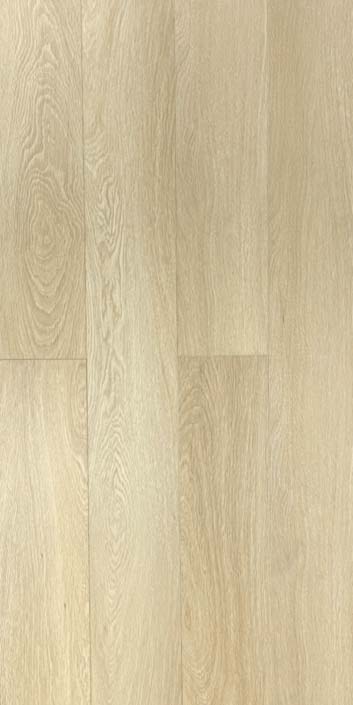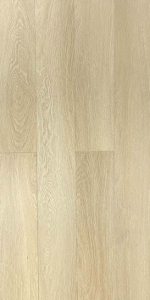info@herkulflooring.ca
info@herkulflooring.ca
An 8mm plank offers a premium thickness, ensuring maximum resilience for bustling areas.
Technical Details For This Vinyl Plank Flooring Product
MODEL INFORMATION
FLOORING PLANKS
Total Thickness
8 mm (0.315″)
▲
Total Thickness: This indicates the overall thickness of each plank in the flooring product, usually measured in millimeters (mm). The thickness can impact various aspects of the floor, such as comfort underfoot, sound insulation, and durability. A thicker plank generally offers better sound insulation and a more solid feel, making it important to consider based on the intended use and location of the flooring.
Related Products
8 mm (0.315″) (Products)Related Articles
Finish Type
Embossed
▲
Finish Type: This refers to the texture and appearance of the flooring's surface, affecting both its visual appeal and functional characteristics such as slip-resistance and feel underfoot.
Material (Core Type)
Stone Plastic Composite (SPC)
▲
Material (Core Type): This indicates the composition of the core layer of the flooring plank, which is critical for stability, durability, and performance. Core types like SPC (Stone Plastic Composite) or WPC (Wood Plastic Composite) offer different benefits, such as increased rigidity or better acoustic properties.
Plank Length
1524 mm
▲
Plank Length: This indicates the length of each individual flooring plank in the product. The length of the planks can affect the visual flow and pattern of the flooring when installed. Longer planks often create a more seamless, expansive look, while shorter planks can add visual interest through more frequent seams.
Plank Width
152.4 mm
▲
Plank Width: This refers to the width of each individual flooring plank. The width can significantly influence the overall appearance of the floor once installed. Wider planks can make a room appear larger and more open, while narrower planks often give a more traditional look and can add depth to smaller spaces.
Plank Color (Group)
→ Gray
▲
Plank Color (Group): This refers to the general color classification of the flooring planks. This grouping is not defined by the manufacturer but is a logical categorization to help customers filter and compare products with similar color tones more easily.
Maximum Length Without Transition Moulding
Up to 60 linear feet without a transition moulding
▲
Maximum Length Without Transition Moulding: This feature specifies the longest continuous length the flooring can be installed without needing a transition moulding. Transition mouldings are used to bridge gaps between different sections or types of flooring, usually for aesthetic or expansion reasons. Understanding this measurement can help you plan your installation more effectively.
Underpad Thickness
1.5 mm
▲
Underpad Thickness: This specifies the thickness of the attached underpad, if applicable. The thickness of the underpad can affect both comfort and insulation properties. A thicker underpad generally offers better sound dampening and a softer feel when walking on the flooring.
Attached Underpad Type
IXPE Foam
▲
Attached Underpad Type: This feature indicates the material composition of the attached underpad. Different types of underpad materials offer varying levels of sound dampening, insulation, and moisture resistance. Knowing the type can help you assess the flooring's suitability for your specific needs.
Classes of use
→ CLASS 31 COMMERCIAL MODERATE
→ CLASS 23 DOMESTIC HEAVY
▲
Classes of Use: This term refers to the suitability of the flooring for different levels of foot traffic and wear, categorized typically for residential, commercial, or industrial settings. These classes help you understand how durable the flooring is and where it can be most effectively used.
Dimensional Stability - X Direction (ISO 23999-2008)
0.05 percent
▲
Dimensional Stability - X Direction (ISO 23999-2008): This is a technical specification that measures how much the flooring material will expand, contract, or deform along its length when exposed to changes in temperature and humidity. It adheres to ISO 23999-2008 standards, ensuring that the flooring meets certain quality benchmarks for dimensional stability.
Dimensional Stability - Y Direction (ISO 23999:2008)
-0.12 percent
▲
Dimensional Stability - Y Direction (ISO 23999:2008): This measures the flooring material's ability to maintain its original dimensions along its width when exposed to varying conditions such as temperature and humidity. It is a quality assurance measure that adheres to the ISO 23999:2008 standard, providing a benchmark for the flooring's stability in the Y-direction.
Stain Resistance (ISO 26987:2008)
0 - Not Affected
▲
Stain Resistance (ISO 26987:2008): This refers to the flooring material's ability to resist stains, measured according to the ISO 26987:2008 standard. It provides a benchmark for how well the flooring can withstand common household stains, indicating the quality and ease of maintenance you can expect.
Related Articles
VINYL FLOORING FEATURES
Slip Resistance (DIN 51130)
R10
▲
Slip Resistance (DIN 51130): This indicates the slip resistance of the flooring according to the DIN 51130 standard. This metric is crucial for safety, especially in areas that may be prone to wet or slippery conditions. A higher slip resistance rating means the flooring provides better grip, reducing the risk of slips and falls.
Surface Treatment
PU Coating
▲
Surface Treatment: This refers to any additional coatings or treatments applied to the top layer of the flooring to enhance its durability, appearance, or performance characteristics. Surface treatments can provide various benefits, such as improved scratch resistance, stain resistance, or UV protection. Always consult the manufacturer's specifications to understand the advantages of the surface treatment used on your flooring.
Residual Indentation (ISO 24343-1:2007)
0.01 mm
▲
Residual Indentation (ISO 24343-1:2007): This specification measures how well the flooring recovers its original shape after being subjected to a load or pressure. The test is conducted in accordance with the ISO 24343-1:2007 standard. A lower residual indentation value indicates that the flooring has better resilience and ability to regain its original form after pressure is removed. This is an important consideration for areas with heavy foot traffic or where furniture may be placed.
Curling After Exposure to Heat (ISO 23999:2008)
-0.09 mm
▲
Curling After Exposure to Heat (ISO 23999:2008): This metric evaluates how much the flooring material curls or warps when subjected to elevated temperatures, in accordance with the ISO 23999:2008 standard. It is an important measure of the product's thermal stability and indicates how well the flooring will maintain its shape in conditions of varying heat, such as direct sunlight or underfloor heating. Lower curling values suggest better heat resistance and dimensional stability of the flooring material.
FLOORING PLANKS PACKAGE
SQFT Per Box
14.92 sqft
▲
This refers to the total square footage that the planks or tiles in a single box will cover when installed. Knowing this information is essential for calculating the quantity of boxes you'll need for your flooring project. It helps to ensure that you purchase enough material, taking into account both the size of the area to be floored and any additional percentage for waste or mistakes.
Planks Per Box
6 item
▲
"Planks Per Box": This specifies the exact number of planks that are contained in each box. It's an important detail for accurately calculating how many boxes you'll need to complete your flooring project. The number can vary from one product to another, so always check this information before making a purchase.
Boxes Per Pallet
72 item
▲
"Boxes Per Pallet": This feature indicates the number of boxes that come on a single pallet. Knowing this can help you plan for bulk orders or large-scale projects, as it can be more cost-effective and efficient to order by the pallet rather than individual boxes. This information is particularly useful for contractors or anyone planning a sizable flooring installation.


